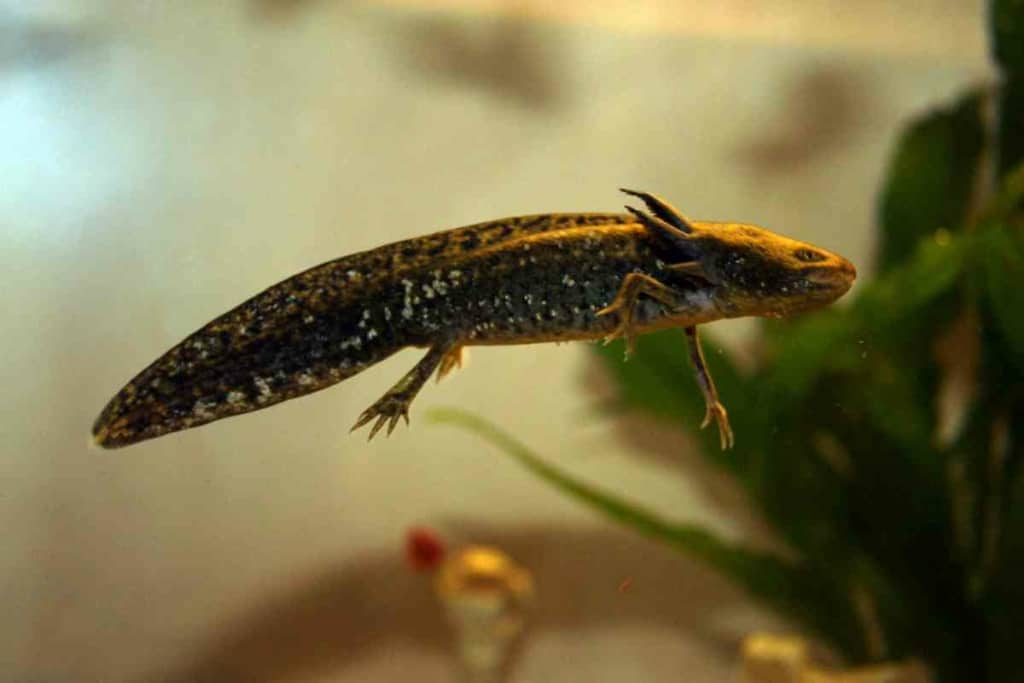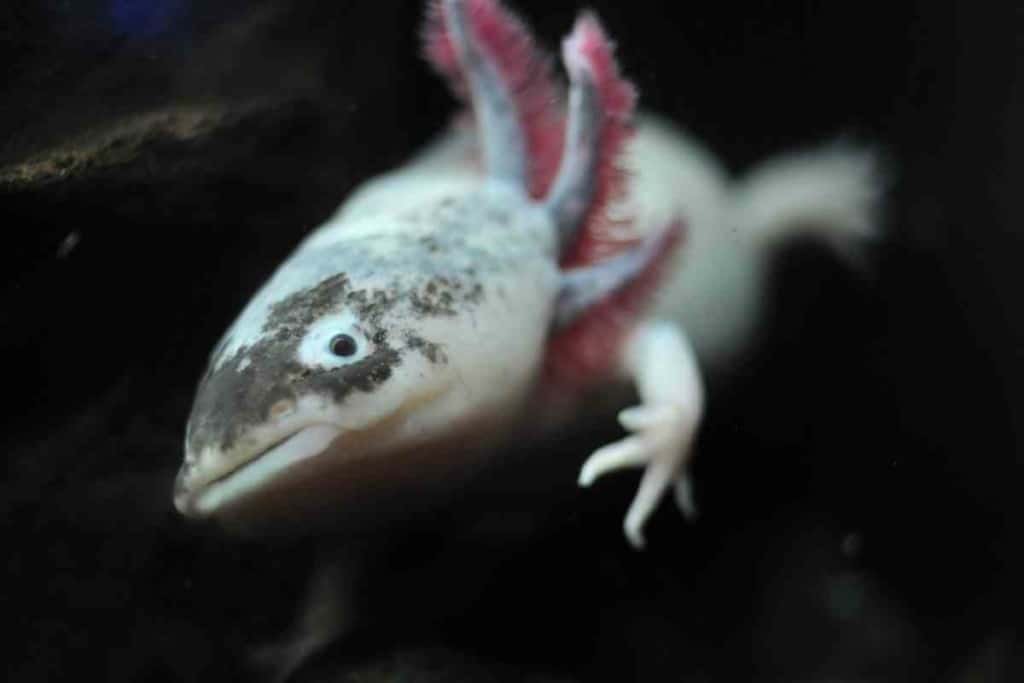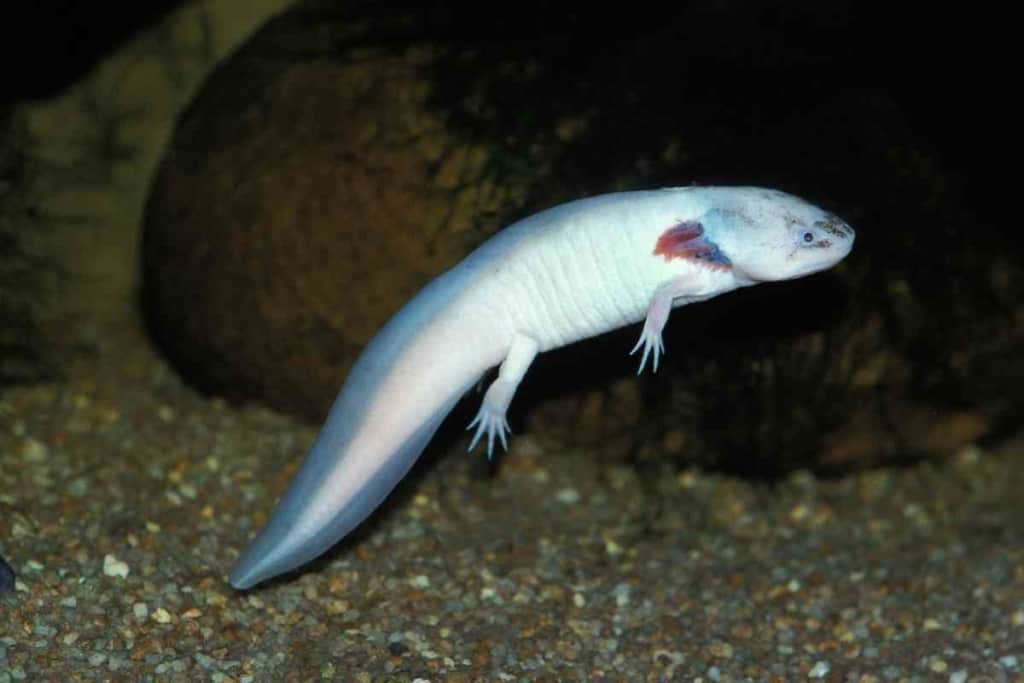What To Do If Your Axolotl Is Floating
Axolotls are aquatic creatures that mostly live at the base of a tank. However, you might want to know what to do if your axolotl is floating.

Why is my axolotl floating?
There are a few explanations for this behavior. First, there is excess ammonia in the tank, which means the axolotl stays at the surface. Secondly, the axolotl could be bloated. Furthermore, it can also happen due to the consumption of unsoaked food.
As axolotl owners, we’ve noticed this behavior in our axolotls sometimes. Here, we’ll explain why axolotls float and what you can do about it.
Reasons Why Axolotls Float

They Are Bloated
Axolotls have a unique trait that some may find concerning – they often float on the surface of their tank water.
This behavior can be alarming, but it is usually due to natural bloating. Axolotls are carnivorous and tend to swallow whole food, leading to increased stomach gas.
While this floating behavior is normal, there are ways to prevent excessive bloating.
One way is to feed them smaller, more frequent meals instead of large, infrequent meals. In addition, providing live prey for your axolotl to hunt can also help prevent bloating by promoting exercise and digestion.
Overall, keeping a close eye on your axolotl’s eating habits and providing a balanced diet can help reduce the chances of excessive floating due to bloating.
They’re Suffering from Impaction
Impaction occurs when an axolotl cannot digest its food properly, leading to the buildup of indigestible materials in the digestive tract.
The most common cause of impaction is inadequately sized or low-quality food.
To prevent impaction, it’s important to feed axolotls food that they can easily eat and digest, such as well-cooked earthworms, blackworms, glass worms, and bloodworms.
In addition, regularly cleaning their tank and providing places for them to hide can also help keep their digestion regular.
Regular vet checkups, diet, and tank maintenance can also prevent potential impaction issues early on. Taking these measures can go a long way in preventing floating caused by impaction in axolotls.

There’s Excess Ammonia in Their Tank
One possible reason axolotls may float on the surface of their tank is an excess of ammonia in the water.
Ammonia is a toxic byproduct of decomposing organic matter, and it can quickly build up in tanks that are not regularly cleaned or properly filtered.
When levels become too high, it can irritate the axolotl’s gills and skin, leading them to float at the surface to escape the toxic substance.
Regular water changes and proper filtration can help to keep ammonia levels under control, ensuring a healthy and happy aquatic pet.
Floating can also be caused by buoyancy issues or excess gas in the digestive system, but excessive ammonia should always be ruled out as a potential cause.
Taking steps to maintain clean water conditions will prevent floating and ensure your axolotl’s overall well-being.
They’ve Eaten Unsoaked Food
Another potential reason an axolotl may float on the water’s surface rather than sink to the bottom is unsoaked food. Like many fish, axolotls have air-filled swim bladders that help them control their buoyancy.
However, if they consume food that has not been properly soaked, it can cause gas build-up in their digestive system and push them upwards in the water.
This can also indicate poor health and that the axolotl should be monitored closely for any changes in behavior or appetite.
Floating can also occur due to malnourishment or constipation, so ensuring they are fed high-quality, fully-soaked food can promote overall wellness and prevent floating behavior.
Ways to Prevent Your Axolotl from Floating

Check Their Eating Habits
Regarding feeding your axolotl, it’s important to monitor their habits and ensure they’re consuming enough food but not overeating.
One way to prevent your axolotl from floating is to only offer them one or two small pieces of food at a time rather than putting a large amount in the tank.
In addition, make sure that any uneaten food is promptly removed so as not to pollute the water or contribute to excess weight gain.
It’s also important to vary their diet with a mix of protein and plant-based options, as an imbalance in nutrition can lead to floating.
By staying vigilant and tracking how much they’re eating, you can help ensure your axolotl stays healthy and grounded.
Remove Excess Ammonia
When it comes to caring for our aquatic pets, the water quality in their tank is crucial. One indicator of water quality is the level of ammonia present.
Ammonia can be released from fish waste, uneaten food, and decaying plants.
If left unchecked, high ammonia levels can cause health issues for your pet and even lead to death. So how do we prevent this buildup?
One important step is regular water changes to remove excess ammonia. Another solution is adding ammonia-removing filter media to your tank’s filtration system.
It’s also important to monitor how much and how often you feed your pet, as too much food can contribute to a buildup of ammonia.
By keeping an eye on these factors, you can help ensure that your aquatic pet has a safe and clean environment where it can thrive.
Maintain Tank Temperature
Maintaining proper tank temperature is crucial for the health and well-being of your axolotl. A consistently warm environment promotes digestion, immune function, and reproductive development.
However, if the water becomes too warm, your axolotl may begin to float or lose coordination. To prevent this from happening, ensure that you have a reliable thermometer in the tank and regularly check the temperature.
If necessary, use a water chiller or lower the room temperature to decrease heat levels in the tank.
Also, avoid placing the tank near heat sources such as windows or radiators. By monitoring and adjusting tank temperature appropriately, you can prevent your axolotl from floating and ensure its overall health.
Invest in Tank Maintenance
As a novice axolotl owner, it can be tempting to ignore regular tank maintenance. However, this negligence can adversely affect your pet’s health.
One issue that can arise is floating, where the axolotl has trouble staying at the bottom of the tank. This can often be attributed to an accumulation of waste and debris, causing an imbalance in water chemistry.
To prevent this from happening, it is important to clean the tank regularly by performing water changes and removing excess waste with a siphon or net.
By taking these actions, you can ensure that your axolotl remains happy and healthy in its freshwater habitat.
Add Floating Plants to the Axolotl Tank
Adding floating plants to your axolotl tank is a simple yet effective way to prevent them from floating at the surface.
Not only do these plants provide much-needed shade and hiding spots for your axolotl, they also add oxygen to the water through photosynthesis.
As an added bonus, the roots of these floating plants act as natural filters, helping to keep the tank clean and healthy.
If you’re unsure how to introduce floating plants into your axolotl’s habitat, consider purchasing a pre-made “floating island” filled with various species.
These can easily be secured in place with suction cups or attached to aquarium decorations. Adding some floating plants will create a more balanced ecosystem for your underwater friend, whether it’s water ferns, hornwort, or duckweed.
Key Takeaways
- If your axolotl is floating, check to see if there is excess ammonia in the tank. You can prevent this by regular water changing and filtering.
- Make sure that your axolotl is getting a proper diet. Keeping track of how much they eat can prevent them from floating.
- You must always keep your tank as clean as possible to prevent your axolotl from floating. A lot of waste matter and debris can be accumulated if tanks are left unchecked.
